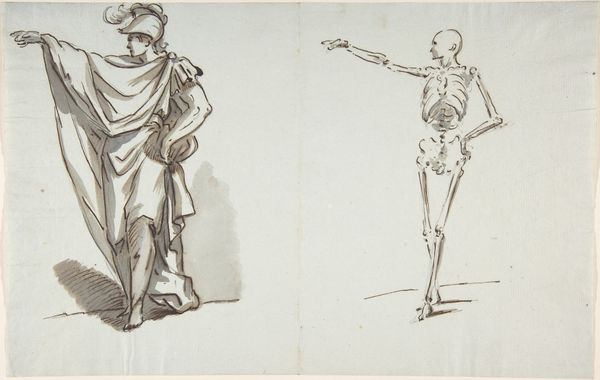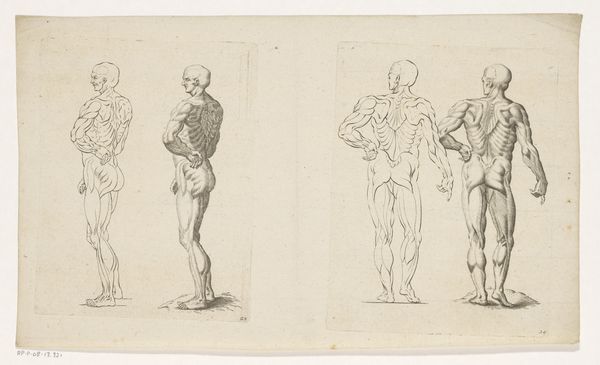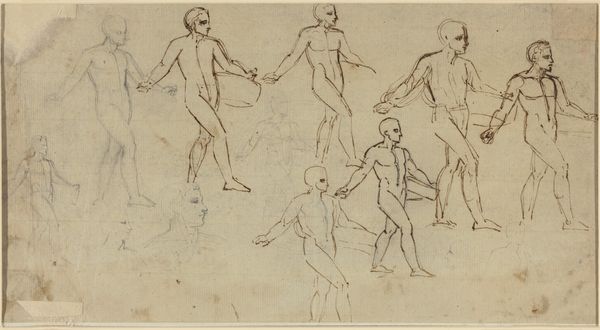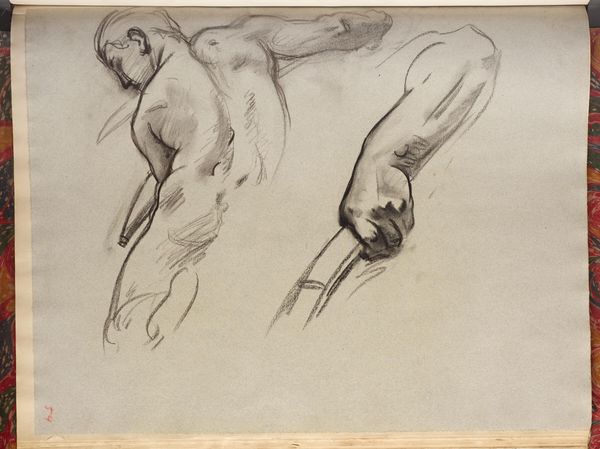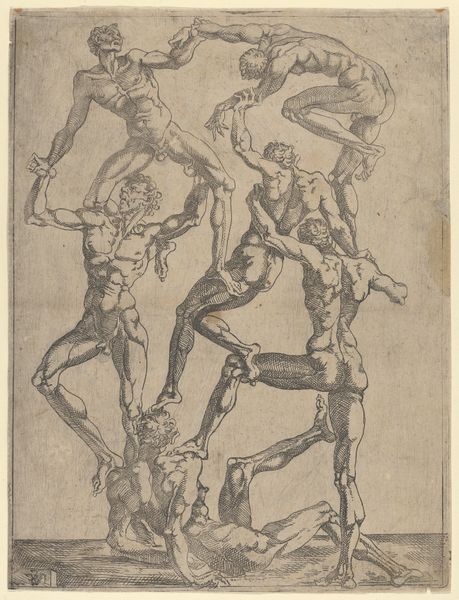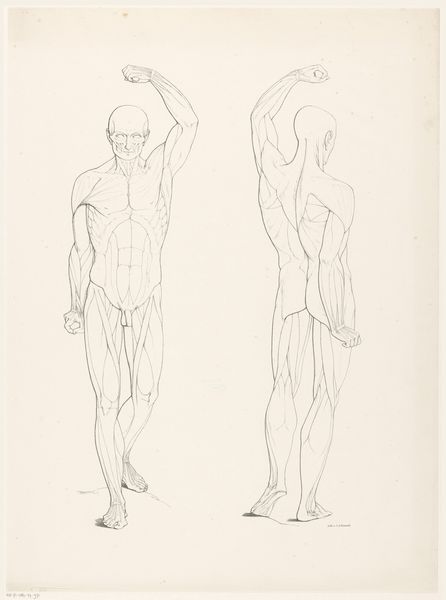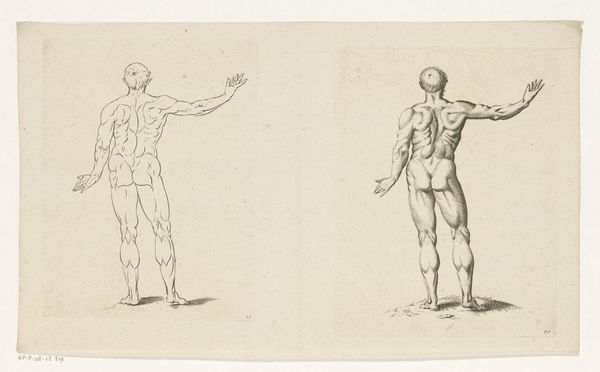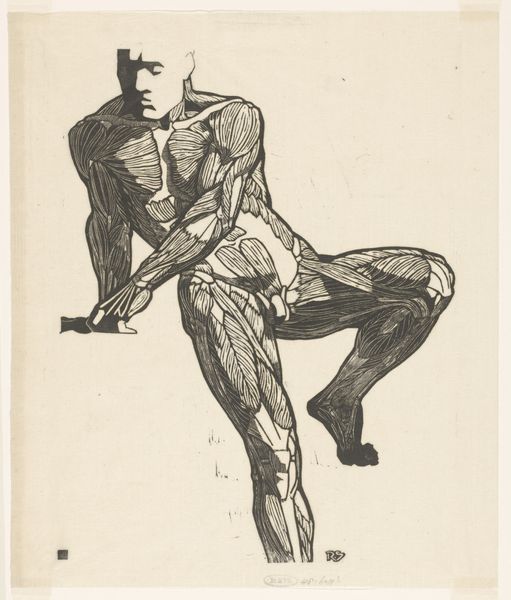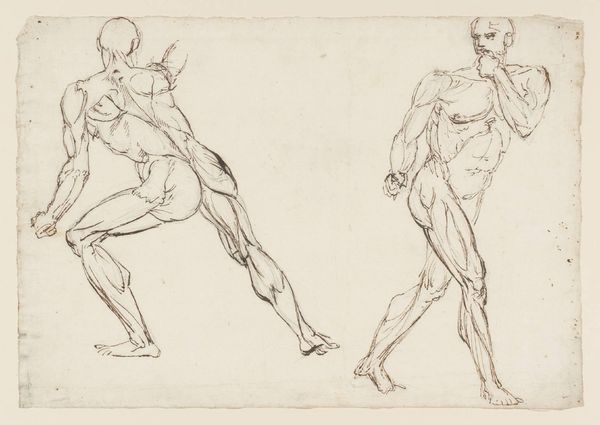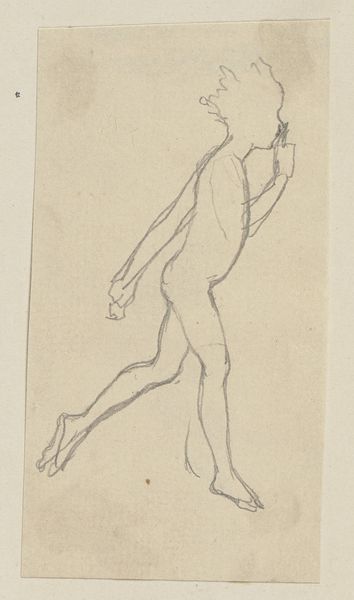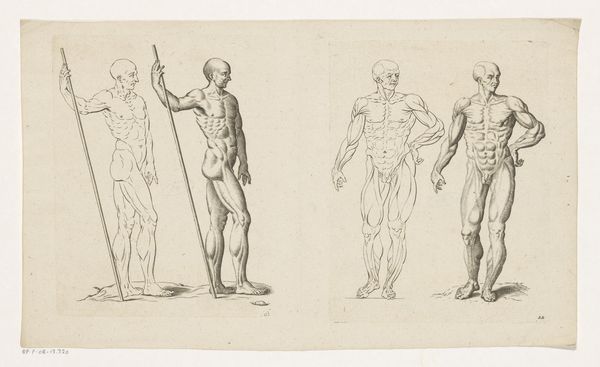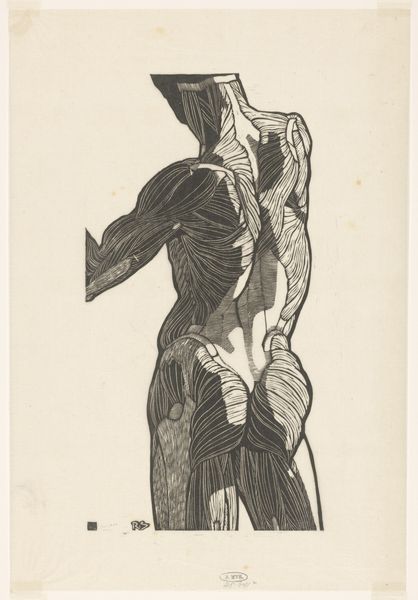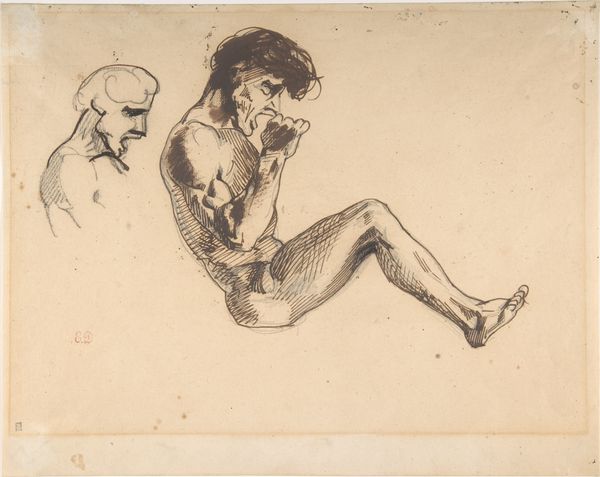
drawing, paper, ink
#
portrait
#
drawing
#
ink drawing
#
classical-realism
#
figuration
#
paper
#
ink
#
academic-art
Dimensions: sheet: 8 3/8 x 13 5/16 in. (21.2 x 33.8 cm)
Copyright: Public Domain
Curator: Before us we have an 18th-century ink drawing on paper from an anonymous artist titled "Anatomical drawing," held at the Metropolitan Museum of Art. Editor: The stark contrast and the anatomical focus give it a surprisingly visceral feel. The skeletal figure juxtaposed with the draped one creates a real visual tension. Curator: It speaks to the academic traditions of art training at the time. Aspiring artists studied anatomy extensively, often copying and recopying anatomical drawings like this to understand musculature and structure. Editor: Yes, I notice that in this artwork there are a pair of figures set to be face-to-face: to the left there is a classically rendered person draped in light clothes while to the right there is a stylized skeleton figure that mirrors the composition of the clothed figure. In comparing the work of this unknown artist, I appreciate the elegance and simplicity of the rendering—the lines have a real authority. Curator: Agreed. It reveals how closely artistic skill was tied to scientific understanding. Knowledge of the human body and the use of media— paper, ink—reflected an artisan’s capacity and, of course, workshop training. Think of all the materials sourced to enable this artisan and its place amongst many similar drawings within studio spaces of the time. Editor: The use of hatching and cross-hatching builds volume and depth even though the medium is, in essence, quite spare. One notices how carefully placed is the line and contour to create the very image of reality from within imagination. I think, from what I see in this art piece, that such carefulness and composition have made its visual impact endure across centuries. Curator: I believe that's the wonderful friction and impact of this seemingly simple sketch. What do you feel lingers for you? Editor: Definitely, the synthesis of artistic method, philosophy, science and making itself evident for all viewers today and for future audiences. How about you? Curator: I echo the significance of these drawings in historical production, study and our current modes of art analysis.
Comments
No comments
Be the first to comment and join the conversation on the ultimate creative platform.
